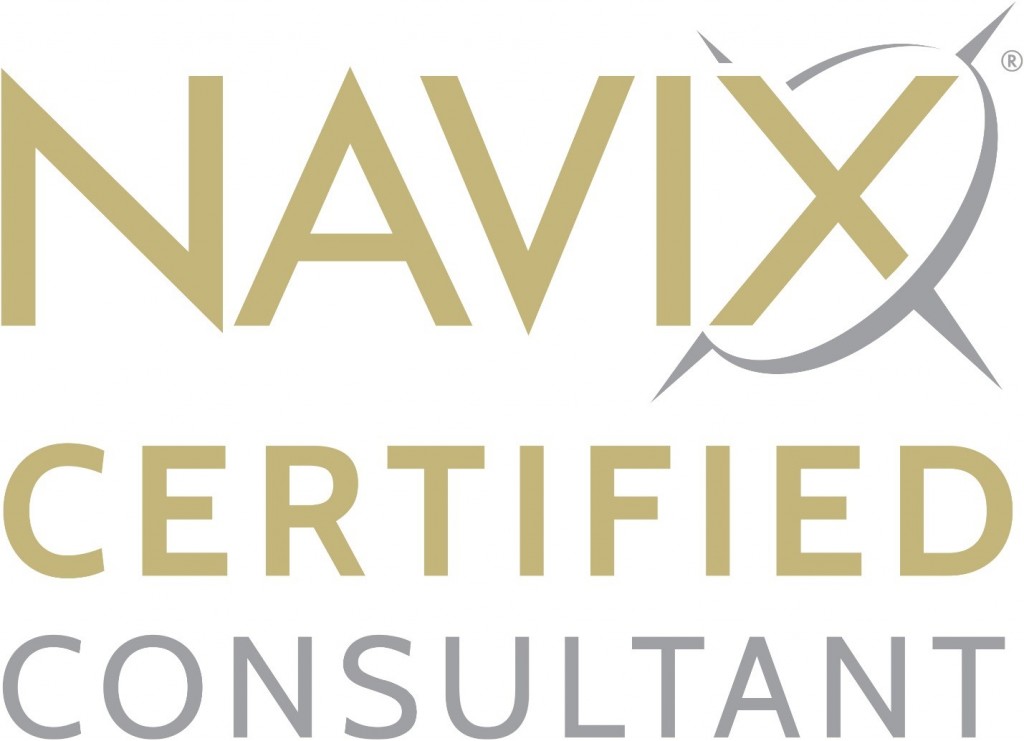
Archive for January, 2020
Five Reasons Why “Letting My Management Team Run the Company” is Not an Exit Strategy
By: Patrick Ungashick

We occasionally hear business owners say something like, “My exit strategy is to hire a great management team to run the company, so I can step back and just collect a check.” Hiring quality leaders for your business is always desirable. Yet, this tactic on its own will not produce a successful and happy exit for these five reasons:
1.Even with highly capable leaders running your company, you still own the company. A significant portion—perhaps the majority—of your wealth remains locked inside the business. At some point you likely will want to access some or all of your capital tied up in the business. This requires an exit strategy.
2.Hiring excellent leaders may allow you to step out of the day-to-day operations of the company, freeing up a large portion of your time — but only a portion. Total absentee ownership is a fantasy. You will need to continue supervising the team’s performance, reviewing business plans and budgets, and approving major decisions. Reducing your involvement in day-to-day operations may help you pursue other interests, but you remain closely tied to your company.
3.In the real world, things change. At some point the management team that you hired to run the company will change, pulling you back into the company’s operations. If a key leader retires, dies, or quits, you will need to identify and hire a replacement. You might also have to temporarily fill in for the missing leader until the replacement has been hired and trained. Or, if a key leader has subpar job performance, you have to do the work of supervising that person more closely and perhaps terminating him or her. In our experience, losing just one key leader from a carefully-built team makes it frustratingly clear to the owner that you have not exited from the company.
4.As long as you own the company, your risks remain unchanged. Many owners seek to reduce personal and financial risks as part of their exit planning. Even with an excellent leadership team in place, the business’s risks are still your risks. You still have to personally guarantee the business debts where required. If the business gets into financial, tax, human resources, or legal difficulties you are still impacted. Any significant capital expenditures are still your decision and risk. Your personal financial net worth remains highly concentrated within the company. Letting a management team run your company typically does little to reduce your personal and financial risk.
5.Even with a highly capable team running your company for you, at some point you will still need a plan for determining what ultimately happens to your ownership interest in the company. You have only punted the issue. Even if you do nothing until your death, your ownership in your company will still either pass to your heirs, be sold, or be shut down. You still have important goals and objectives to plan and execute.
Hiring a competent leadership team is never a bad idea. A quality team not only drives business success but also creates exit planning flexibility and opens up additional paths for your exit. It allows you to delay exit if you wish. Moreover, a quality team usually increases company value at sale or, if passing the business to your children, provides for a smoother transition. Competent leadership teams help business owners achieve successful exits.
However, hiring the team and sitting back to collect a check is not an exit strategy. You are still an owner with all of the responsibilities, burdens, and challenges that ownership entails. Therefore, you still need an exit plan beyond a highly skilled management team.
To learn how a strong team can prepare your company for sale, and to help you get ready for exit, contact Tim at 772-221-4499 for a complimentary, confidential 45-minute consultation.
Adjusted EBITDA: The Second Most Important Number to Know as You Prepare for Exit
By: Patrick Ungashick

At NAVIX, we know that most business owners’ top goal at exit is to reach financial freedom, which means having enough money so that work is a choice and not an economic necessity. If reaching financial freedom is the number one goal at exit, then your Exit Magic Number™ – the net amount needed to get there – is the most important number to know. So, what’s the second most important number to help you prepare for exit? Your company’s adjusted EBITDA. Unfortunately, many owners either do not know this number or calculate it incorrectly. Here’s why.
If you intend to sell your business at exit, potential buyers will typically look to your company’s adjusted EBITDA to determine their offer price. EBITDA stands for Earnings Before Interest, Taxes, Depreciation and Amortization. Contrary to misconception, it does not really calculate a company’s profitability. However, buyers put such importance on EBITDA because it shows the company’s current earnings power. EBITDA, in essence, ignores a company’s current ownership issues (debt, tax structure, and depreciation and amortization, which are all largely the byproduct of past capital investment and acquisition decisions) to isolate the company’s current cash flow.
You don’t have to calculate or track your company’s EBITDA; it’s not required to complete your tax returns. You probably tend to focus more on top line growth. Yet for most buyers, EBITDA is the first and most important step in determining what they will pay for a company they seek to purchase.
So if that’s EBITDA, then what is adjusted EBITDA?
Well, like many business owners, you might not always make decisions that maximize your company’s EBITDA. Sometimes, you have other motives and priorities. For example, if your salary exceeds what you would pay somebody else to do your job, your extra above-market rate compensation is lowering the company’s earnings, hence lowering EBITDA. The same thing happens if you enjoy significant tax-deductible ownership-related perks such as company cars, expense accounts, travel reimbursement, and family members on payroll for generous amounts. All of these discretionary expenses depress the EBITDA, but most likely you don’t mind since they also lower your tax bill each year.
Other business decisions may cause EBITDA to be artificially overstated. For example, if you are paying yourself a below-market salary, either to free up money to grow the company, or because you take the lion’s share of your income from the company in the form of profit distributions, the EBITDA may be higher than it otherwise would be if you were paying yourself market-rate wages.
It’s not just owner compensation and perks that can influence EBITDA. Other issues can impact your EBITDA one way or another, including: accounting methods, benefits programs, leases on space or equipment, and product development costs. As a result, many if not most privately-held companies either do not track their EBITDA, or if they do, EBITDA has not been “normalized” to reflect other business decisions and issues that may understate or overstate the figure.
An adjusted EBITDA therefore involves carefully reviewing these issues and calculating a truer picture of the earnings, as if the company was owned by somebody other than you. Items that artificially understate EBITDA are “added-back” into the figure and any items that artificially overstate EBITDA (“negative add-backs”) are factored in as well.
None of this may matter until you get to the point where you intend to exit within the next several years. If you intend to sell your business at exit, accurately presenting the company’s adjusted EBITDA is paramount. Because buyers typically want to see the prior three full years’ financial statements, owners need to begin calculating their adjusted EBITDA well before they intend to exit—we recommend at least five years before the desired exit, in case you sell more quickly than planned.
Unfortunately, too many companies do not accurately calculate their adjusted EBITDA. Adjusting the EBITDA properly and thoroughly requires somebody with experience preparing companies for sale; many small to mid-sized company bookkeepers and controllers lack this experience. If you get close to exit and don’t know your true adjusted EBITDA, then any of the following problems can occur:
- If your EBITDA is artificially understated, as is common, offers from buyers will be much lower than otherwise possible. For example, if a buyer is offering to pay five times the earnings for your company, then every $1.00 that your EBITDA is understated will cost you as much as $5.00 off your sale price.
- If your EBITDA is overstated, this will likely come out during negotiation or the due diligence process, throwing a rather large wrench into your plans to sell the company for a certain price. For example, a buyer paying five times the earnings may reduce its offer price by $5.00 for every $1.00 that EBITDA is discovered to be overstated.
- Whether under- or overstated, if you and the potential buyer cannot agree on what the accurate adjusted EBITDA is, it will be hard to reach agreement on other important figures, undermining your chance to sell the business at all.
When owners do not accurately know their company’s adjusted EBITDA, one more problem commonly occurs. If a potential buyer unexpectedly comes knocking on your door via an unsolicited email or phone call inquiring if you wish to sell, you should not share any financial data before you can produce an accurate adjusted EBITDA. Prematurely sharing inaccurate or non-adjusted EBITDA figures gets the process with this potential buyer off on the wrong foot from the very first step.
Knowing your adjusted EBITDA in advance is fundamental to a successful sale. At NAVIX, our clients know their adjusted EBITDA, as well as other key financial figures and metrics needed to prepare a company for sale to an outside buyer.
To learn what it takes to prepare your company for sale, and to help you get ready for exit, contact us for a complimentary, confidential 45-minute consultation, at your convenience contact Tim 772-221-4499.

14 Reasons Not To Share Ownership with Key Employees
By: Patrick Ungashick

Many business owners consider at some point sharing ownership of their business with one or more key employees. Sharing ownership can create powerful advantages—retaining employees for the long-term is usually a top motive. Sharing ownership appears to elevate top employees into a true partnership with you in the ongoing effort to grow the business.
However, sharing ownership is fraught with potential problems. In our experience, it backfires more often than it succeeds. If it backfires, the owner’s ability to successfully exit from the business one day may be jeopardized.
Listed below are fourteen reasons to avoid sharing ownership with top employees, whether you are contemplating selling or gifting to them a piece of your company:
Top employees sometimes leave. No matter how loyal and trusted they are, be realistic. It happens.
1.Top employees rarely switch industries. If they leave you, they will likely join or become the competition. Now you have somebody competing with you who owns a piece of your business.
2.To prevent this, you will need to have employees sign an agreement obligating them to sell their stock (or units, if an LLC) back to you should they leave. (This is commonly called a buy-sell agreement.) This arrangement helps avoid a competitor owning some of your company. But, you won’t like writing a check to a former employee to buy back your stock. That’s not fun.
3.Speaking of the buy-sell agreement, sharing ownership with top employees increases governance and legal costs, such as creating and/or updating this buy-sell agreement.
4.Sharing ownership complicates decision-making on critical issues, such as selling the entire company one day. You cannot allow minority owners to hold up a possible sale in the future. This buy-sell agreement therefore also needs to give the majority owner clear authority to sell the entire company, further complicating your exit planning.
5.Sharing ownership bestows rights. Even minority owners have certain rights, commonly including a right to review the company’s financial information and records. You may not be crazy about employees seeing that level of financial detail.
6.Sharing ownership with one or more employees creates a precedent. You intend your company to grow, and that growth in the future may lead to additional valuable employees coming into the picture, either hired from outside the company or promoted from within. Those future top employees may want ownership too, given that their peers already have it.
7.Once a top employee has ownership, it’s easy for the line to blur between ownership and employment. It can become harder to manage an employee who also is an owner. Firing that person, if ever necessary, becomes harder and more expensive.
8.With ownership, come perks. You likely enjoy some personal expenses paid by the company, such as your vehicle, cell phone, meals, etc. Employees who receive ownership often expect to participate in such perks. Either, you will have to include them, which increases costs, or you will have to temper their expectations, which increases your work and their disappointment.
9.With ownership comes responsibilities, such as personally guaranteeing company debt. Top employees who have ownership should not be exempted from sharing in the responsibilities and risks of ownership. It takes additional time and work to explain all of this to new owners, and to include them in a creditor’s underwriting procedures.
10.Occasionally, employees might do things that put themselves and their ownership in the company at risk, such as getting divorced, get sued, or find themselves in financial difficulties. Sharing ownership increases the possibility that your company gets dragged into one of these situations.
11.Sharing ownership complicates your tax and wealth planning. Various strategies that owners use to reduce taxes and build wealth get more complicated with more owners. For example, certain laws regarding retirement plans require owner-employees to be treated differently for anti-discrimination testing. Also, if you have an S-corporation and you wish to make a profit distribution, it must be in proportion to ownership.
12.Sharing ownership dilutes your equity position. That can be more expensive than using cash to incentivize, reward, and retain top employees.
13.Sharing ownership can put your exit goals at risk, particularly if you intend to sell the company. Employees with an ownership interest will receive their portion of the proceeds upon sale. Consequently, you may create a situation where these employees are now flight risks immediately after the sale, if they receive enough cash to contemplate leaving the company.
Because of these disadvantages, we try to accomplish business owners’ objectives without sharing actual ownership. Owners and key employees are often surprised to learn that alternative strategies exist which incent and retain top employees, without the risks of sharing actual ownership. One of our favorite tools to reward, retain, and incent employees involves using golden handcuffs plans in lieu of shared ownership.
There are a few situations where sharing ownership with top employees may make sense. The most common would be sharing some actual ownership now as one step within a comprehensive plan to eventually sell or transfer the entire business to the employees. Otherwise, in most cases, it is advisable to pursue a different course of action.
If you have a quick question coming out of this article or, if you want to discuss your situation in more detail, we can set up a confidential and complimentary phone consultation at your convenience contact Tim 772-221-4499

An A-Team Is a Collection of Learning Curves
Periodically, I share a favorite book review from Readitfor.me. There is never enough time to read all the latest books – this tool is a great way to learn and to stay on top of the latest topics and new ideas.
Your Team is your greatest resource. Recognizing each member’s abilities and fostering their growth to full potential will grow your Team’s Strength.
This review of Build an A Team by: Whitney Johnson outlines the “S Cures” of learning that you can use to strengthen your team to reach peak productivity.

Build an A Team
by: Whitney Johnson
Book Review by ReadItFor.me
Disruptive innovation, at its simplest, explains how low-end industry insurgents take on—and eventually outcompete—high-end incumbents who seemingly should have known better Things take traction and the David beats the Goliath.
It is now generally accepted that disruptive innovation underpins the invention of new products and services. Less generally recognized, is that personal disruption in the workplace—the movement of people from one learning curve to the next, one challenge to another—can drive learning, engagement, and even innovation. Johnson claims we can build an A Team this way. Let’s explore how.
The S curve of learning
The S curve of learning represents three distinct phases:
1. The low end, involving a challenging and slow push for competence.
2. The up-swinging back of the curve, where competence is achieved, and progress is rapid.
3. The high end of the curve, where competence has evolved into mastery and can quickly devolve into boredom and disengagement.
An A-Team Is a Collection of Learning Curves
Johnson challenges us to visualize our team as a collection of people at different points on their own personal S curves. New team members will be at the low end of their curve for approximately six months depending on the difficulty and aptitude. At the six-month mark, they should be hitting the tipping point and moving onto the steep back of their learning curve. During this second phase, they’ll reach peak productivity, which is where they should stay for three to four years. At around the four-year mark, they will have made the push into mastery. In the mastery phase, an employee performs every task with ease and confidence. But ease, and even confidence, can quickly deteriorate into boredom without the motivation of a new challenge. It is time for them to jump to a new learning curve.
Accelerants of Learning And Growth
Johnson gives us pointers to progress on how to get the right Team on the right Learning S-curves.
Johnson challenges us to visualize our team as a collection of people at different points on their own personal S curves. New team members will be at the low end of their curve for approximately six months depending on the difficulty and aptitude. At the six-month mark, they should be hitting the tipping point and moving onto the steep back of their learning curve. During this second phase, they’ll reach peak productivity, which is where they should stay for three to four years. At around the four-year mark, they will have made the push into mastery. In the mastery phase, an employee performs every task with ease and confidence. But ease, and even confidence, can quickly deteriorate into boredom without the motivation of a new challenge. It is time for them to jump to a new learning curve.
Accelerants of Learning And Growth
Johnson gives us pointers to progress on how to get the right Team on the right Learning S-curves.
1.Identify the Right Risks
What needs aren’t being met on your team? Does it make sense to redistribute responsibilities? Create a new role? Would more high-quality candidates be available if you looked beyond the spec of the current job? As a manager your job is to mitigate the risk of disruption, not to plug gaps with human resource plugs.
2. Play to Individuals’ Distinctive Strengths
What does each person do well that other people on the team do not, and what sorts of problems do those strengths equip them to solve? As a manager, your job is to pinpoint what people do uniquely well and pit these abilities against assignments that make their strengths relevant
3. Stepping Backward Is a Way to Move Forward
Why would an employee be motivated to step back from success in a role while resting on their laurels at the top of the curve, enjoying privilege and entitlement? Because stepping back is your slingshot to moving further forward and contributing more. Pull back and accelerate further.
4. Give Failure Its Due
At the low end of the curve, when you hire within the organization you must expect staff to flounder. This gives them support for learning, allowing them to quickly engage in the actual work. With employees in the sweet spot of the S curve it can be harder. You may want to shield them from failure, but when tasked with undemanding assignments their confidence begins to falter. Give them stretch goals to keep the edge.
5. Encourage Discovery-Driven Growth
With discovery driven growth the initial plan is skeletal and is fleshed out as feedback rolls in. We can use this approach when managing people. As you learn about a person’s capabilities you can redeploy them to improve the match between strengths and unmet business needs. Job descriptions should be deliberately vague attracting talented prospects who can contribute now, while offering potential unexplored roles.
Hire People Who Can Grow on the Job
Begin by reminding yourself that the goal is to approach human resources as raw materials rather than as finished products, the same way you would handle other resources. Johnson suggests we consider the following.
1. Identify the tasks you want a new hire to perform. Don’t accept that it has to stay as it currently is. Genuinely understand what you are looking for, then make the effort to find it.
2. Do a team check: consider how the new role will affect the team. How might a new hire enhance the capacities your team already has? Where are the gaps in good team compatibility?
3. Do a sanity check: identify your motivation for the new hire. Having identified these, may require an adjustment to expectations. If we onboard someone who can do the functional job but can’t do the emotional job, we won’t be satisfied no matter what they do.
4. Write the right job specification. The target should be to attract talented people who are qualified to onboard at the low end of the job’s learning curve. They won’t be experts, but they will have what it takes to learn and grow into other roles. If we inflate the necessary qualifications to attract the crème-de-la crème we will get a candidate who will become disinterested within the first few months of employment.
Managing the Hungry New Hire
New hires need a vision. Understanding why their job is important will aid them through early stage difficult days. Initially they may struggle and try your patience. You may even wonder why you hired them. But you can increase their odds of moving up the learning curve by laying out a vision from the outset. Just as your new employee needs to understand the company’s vision, you’ll want to understand theirs. Find out what they are trying to accomplish as a person and how this new role fits with their goals, as well as what they anticipate they will need from you to be successful.
As your employees share their goals with you, clarify expectation that progression by learning is important. Be explicit: I am here to help you help me get my job done. Here’s how. I will then reward you for your contributions. And here’s how I’ll do that. Get your new hire’s perspective on your operation. Being able to hear the contrary ideas of others allows us to move more quickly up the learning curve. Learn to solicit ideas and opinions from newcomers who aren’t yet blind through familiarity. Future performance and innovation may hinge on it.
Be a Chief Encouragement Officer. Feeling the agitation or disapproval of the boss can cause concern. Remember staff took this job and will stay in this job—or not—largely because of the leader. If you can make them feel safe and acknowledge their efforts, even when imperfect, you’re sitting on a gold mine.
Playing to Sweet Spot Strengths
Sweet-spot employees are confident in their abilities, having moved past the daily struggle at the low end of the curve. Yet it is common for managers to be reluctant to provide these employees with stretch assignments. Maybe you don’t want to discourage or derail them. But experiencing a genuine risk of failure – working under pressure – is what motivates most of us to step up to the plate. Allow, and even generate, pressure. In the case of your sweet-spot employees, consider imposing constraints that fall into the following categories:
- Time – A task that is less demanding becomes a major challenge if you impose a tight deadline. Here are some questions to ask your employees, and yourself. To hit annual targets in nine months instead of twelve, what would you do differently? If you were going to be away for three months, what would you do to make sure things could run without you? What are the most important priorities? Which things aren’t as important? What must you absolutely get done so that your manager can advocate for your jump to a new curve?
- Money – Trim back the expenditure on the team. Ask questions such as: If your business unit had to be profitable as a stand-alone entity, what would your business model be? If you only had half of the current marketing budget, what would you do differently? If you had to assemble an A-team with only 80% of your current budget, what would you do?
- Expertise – Exploit their deep understanding. Ask: If you were CEO for a day and ran the company based on your area of expertise, what would you change? What if everyone on your team were new? No experts, only novices. What would you do differently?
Managing Masters
Here’s the challenge: after months, maybe years of investment, our employee shoots up the learning curve. They have become our go-to person, willing and able to do whatever is asked. We’ve become accustomed to an outsized return on their effort. Why would we push them to try something new, when we’re still reaping the rewards of our investment? As growth peaks and flattens out, if change isn’t on the horizon, our high performer may become a low performer. This is seldom intentional, but it happens anyway, either because they feel stymied or because work has become too easy, and routine is boring.
Have Your Best Workers Share What They Know
High-end-of-the-curve employees are sought after assets internally but even more so externally. So how can you manage (and keep) this human resource you’ve worked hard to develop in a way that will work for your organization, your team, and you? There are three important roles they can play:
Pacesetters: pushing low-enders to excel. Put your top performers to good use by showing low-enders what success looks like.
Trainers: conveying corporate memory. Have the top enders create their legacy in the creation of the Organisational Encyclopaedia – The business Book of Knowledge.
Mentors: the benefits of mentoring offer a fresh angle on the job for someone who may be a bit idle while they await the jump to a new curve, and it disperses the training responsibility through a wider pool of talent.
Keeping Masters Engaged
The goal is always to retain talent, but the more people achieve seniority, the more it becomes a challenge. Not everyone can go up. But it is also true that “up” isn’t the only way up: a lot of learning and growth can happen in lateral moves that may give employees the perfect skill set to forge ahead. If lateral moves carry some stigma, then backward moves are often seen as even more so. We tend to assume something’s wrong with someone who takes a step back. But sometimes taking a step back is exactly the right move. Like the slingshot, we pull back to get the momentum we need to catapult forward.
Shake Things Up
Managing people as a series of S curves requires a disruptive mindset on your part. Here are some important questions Johnson says we should consider.
How can I shake up employees or teams who have become set in their ways? What goals might be accomplished by shifting people into different roles? How can I create a company culture that encourages and even insists on curve jumping?
Where to Climb When You’re at the Top
For some employees, there may not be a next curve to jump to within the organization, especially those who are approaching retirement. Data tells us that more people are choosing to work past traditional retirement milestones. Some may have the work-life bandwidth remaining to tackle entirely new learning curves, others may not. Efforts to accommodate their needs, perhaps part-time or remote work can keep them contributing at great benefit to everyone involved. Many will be willing to discuss adjustments to compensation that will maintain their high value to the firm while allowing them more flexibility to pursue noncareer objectives. The key is to think creatively. Years of experience is a human resource not to be wasted.
Conclusion
Successful businesses strengthen their greatest resource by hiring and growing Strong Teams.Are you using the Team Strength DISC model? It is a great tool that helps you to easily identify and understand your own style, recognize and cognitively adapt to different styles. The Team Strength charting app makes it easy to develop a process to communicate more effectively with others. Creating effective communication at every level of your origination.
Tim Kinane
Call 772-210-4499 to set up a time to talk about tools and strategies that will lead to better results.
Please share this with a friend/colleague
 Tim is a Consultant to Business, Government and Not-for-Profits Organizations specializing in innovative and challenging ways for organizations to survive, to thrive and to build their teams.
Tim is a Consultant to Business, Government and Not-for-Profits Organizations specializing in innovative and challenging ways for organizations to survive, to thrive and to build their teams.